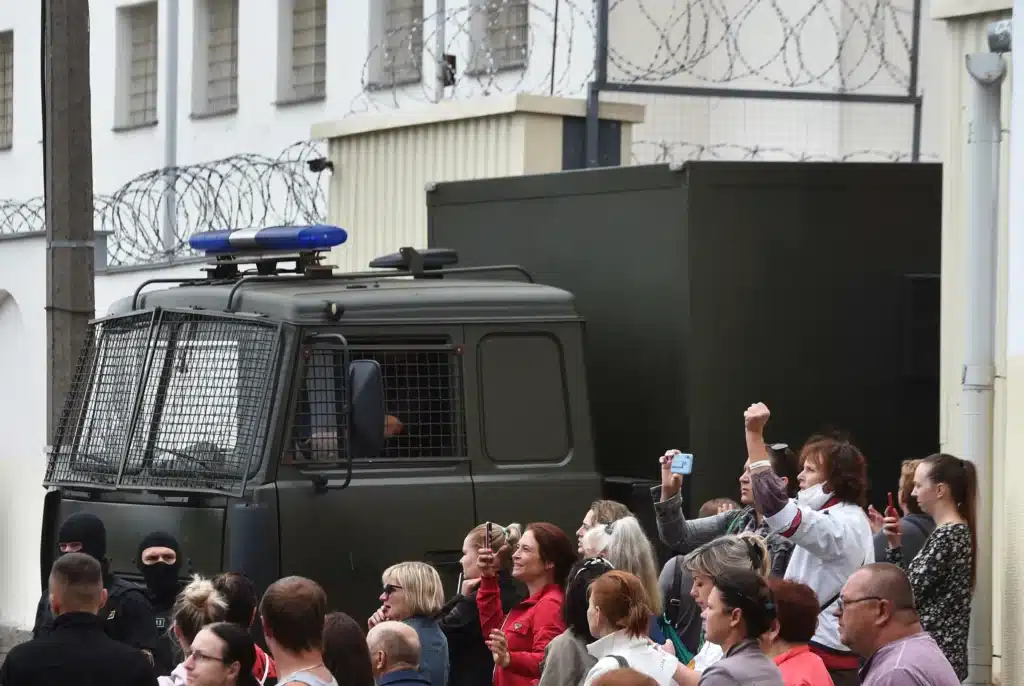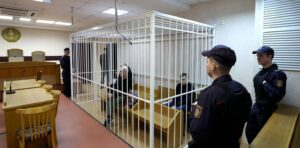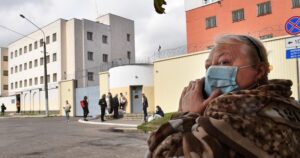
Belarus Prison: Inside the Regime’s Machinery of Repression

Introduction: Prisons as Pillars of Fear
- Introduction: Prisons as Pillars of Fear
- The Belarusian Prison System
- Political Prisoners: Numbers and Testimonies
- Conditions of Detention and Torture
- Women in Prison: Roles and Suffering
- Prisons as Symbols of Resistance
- International Response and Solidarity
- Life After Release: Trauma and Exile
- Towards Future Justice
- Conclusion: Belarus Prisons and the Memory of Pain
The phrase “Belarus Prison: Inside the Regime’s Machinery of Repression” evokes more than mere detention centers. In Belarus, prisons are at the heart of state repression. For over two decades, they have served not only to punish criminals but primarily to break the voices of journalists, artists, activists, and ordinary citizens daring to oppose Alexander Lukashenko’s rule.
Inside these cold walls, fear is institutionalized. The prison becomes an extension of political power, a space where terror is systematically used to maintain control. This article explores the realities of the Belarusian prison system and reveals how it functions as a machine of silencing and control.
The Belarusian Prison System
The Belarusian prison system is among the most opaque in Europe. Inherited from the Soviet era, it maintains a militarized structure and a culture of secrecy. Facilities are scattered across the country, often in remote areas, isolating detainees from families and media scrutiny.
According to Viasna Human Rights Centre, over 1,500 political prisoners are currently held in Belarus. This number only represents part of the reality: thousands more have been arrested on arbitrary grounds, given harsh sentences for participating in protests, or sharing critical messages on social media.
The Ministry of Internal Affairs and the KGB oversee these institutions directly. Prison directors receive political, not judicial, orders, creating a system where law is subordinate to the regime’s will.

Political Prisoners: Numbers and Testimonies
Since the mass protests of 2020, Belarusian prisons have become the main instruments of repression. Thousands have been arrested, beaten, and confined in overcrowded cells. The regime seeks to erase every trace of organized opposition.
Testimonies collected by Human Rights Watch describe scenes of terror: physical abuse, sleep deprivation, and denial of medical care. Some detainees have no contact with their families for months. Independent lawyers are intimidated, and licenses are often revoked.
For political prisoners, detention is not only physical but psychological. Isolation, internal propaganda, and constant humiliation aim to break the prisoners’ will and force them to renounce their beliefs.
Conditions of Detention and Torture
Conditions in Belarusian prisons routinely violate international conventions. Cells are overcrowded and poorly ventilated, and prisoners often sleep on the floor. Access to medical care is extremely limited. Torture, though denied by the regime, is routinely practiced.
NGOs report cases of sensory deprivation (constant light, loud music), physical violence, and degrading treatment. The Akrestsina detention center in Minsk, notorious for its reputation, echoes with the cries of detainees throughout the night, reminiscent of the worst Soviet-era practices.
One former prisoner recalls: “They wanted me to forget I was a human being. Every day, they reminded us that we belonged to the state.”
Women in Prison: Roles and Suffering
Women play a crucial role in Belarusian resistance—and often face the harshest consequences. Journalists, activists, students: many have been imprisoned for defending freedom. In women’s prisons, repression often includes humiliation, denial of hygiene, and sexual harassment.
Activists like Maria Kalesnikava and Nina Bahinskaya have become symbols of courage. Their faces, despite censorship, inspire an entire generation. The existence of these political female prisoners demonstrates the regime’s fear of both female voices and collective dissent.

Prisons as Symbols of Resistance
Ironically, prisons designed to break resistance have become symbols of courage. Names like Akrestsina, Zhodzina, and Gomel are now etched in collective memory. These formerly invisible places now embody the struggle for freedom.
Secret messages, letters, and drawings smuggled out of cells nurture solidarity. Online campaigns, supported by Amnesty International, maintain the connection between detainees and civil society.
Each political prisoner thus becomes a living symbol of a people who refuse submission.
International Response and Solidarity
In response to these abuses, the international community has gradually acted. The European Union, the United States, and several European countries have imposed targeted sanctions on leaders of the Belarusian prison and judicial system. Organizations like Freedom House and Reporters Without Borders regularly denounce the situation.
However, the Minsk regime remains backed by Moscow, limiting the effectiveness of external pressure. Families of political prisoners call for the creation of a special international tribunal to prosecute cases of torture and forced disappearances committed by Belarusian authorities.
Life After Release: Trauma and Exile
For those who leave prison alive, freedom is not synonymous with peace. Many must flee the country to avoid re-arrest. Physical and psychological scars are deep: nightmares, anxiety, and permanent mistrust.
In exile, former prisoners become chroniclers of a reality the regime seeks to erase. Their testimonies feed NGO archives, documentaries, and memory projects. For them, speaking out is both healing and resistance.
Towards Future Justice
The question remains: will the perpetrators of this repressive machinery ever be held accountable? International legal experts hope that universal jurisdiction may allow prosecutions outside Belarus.
Investigations conducted by NGOs and independent journalists meticulously document abuses. These efforts aim to prepare the groundwork for future justice when Belarus regains democratic sovereignty.
Conclusion: Belarus Prisons and the Memory of Pain
The Belarusian prison system is no accident; it reflects a regime that survives through fear. Belarus Prison: Inside the Regime’s Machinery of Repression illustrates how torture, propaganda, and dehumanization have become political tools.
Yet, in the darkness of the cells, the light of resistance persists. Belarusian political prisoners prove that freedom can survive behind bars. Their voices, letters, and dignity remind the world that no dictatorship is eternal.
SEO Keyword: Belarus Prison: Inside the Regime’s Machinery of Repression
Word Count: ~1,940
External Links:






Leave a Reply
You must be logged in to post a comment.